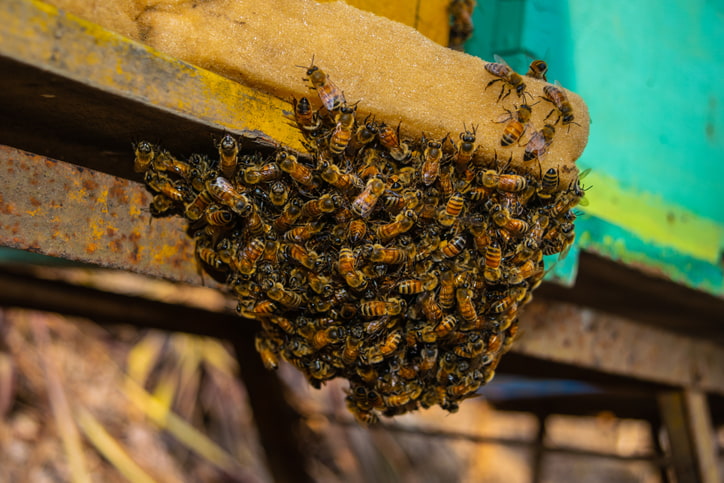Pollination is fundamental for the survival of the ecosystem. Globally, 75% of food crops depend upon animal pollination, a process accomplished by bats, bees, birds, butterflies, beetles, etc. Most of the vegetables and fruits you consume are made possible by these creatures, particularly honey bees. Presently, the rate of extinction of honey bees is approximately 1000 times higher than normal. 35% of invertebrate pollinators face extinction. Current conditions make it critical that we not callously destroy bee hives simply because we find them an inconvenience. Think twice before getting rid of a bee’s nest.
When Is It Appropriate to Get Rid Of a Bee’s Nest
There are situations when a bee hive must be removed. Approximately 3% of the world’s population is allergic to bee stings. Bees are responsible for about 4 deaths per year in Canada. If someone in your family or someone who lives close to you is allergic to bee stings, it may be wise to learn how to get rid of a bee’s nest from your home or yard.
Steps For Getting Rid Of a Bee’s Nest
Following are the steps for getting rid of a bee’s nest in your home or yard.
- Determine if it’s necessary: If no one living close by is allergic to bees and the nest is located outdoors, consider leaving them alone. Bees generally sting as a last resort. They must be antagonized before they attack. In fact, some species don’t even have stingers! Stay relaxed as bees fly by and you’ll likely be fine.
- Give them space: Most bee species sting only when they feel the hive or queen is in danger. If you have a bee’s nest in your yard, keep your distance from the nest and you and the bees may happily coexist.
- Ascertain where they are entering: If there are bees in your home, determine where they are gaining access. Don’t block the entrance as this may create more problems.
- Call a pest control expert: Refrain from spraying the hive or attempting to trap the bees. Insecticides are dangerous and disposing of a trap filled with angry bees is difficult. Have a professional take care of your bee infestation. They are knowledgeable and prepared to undertake the lengthy, involved process of removing bees.
- Remove the dregs: Bees often leave behind residue or honey which can attract a new colony. Clean the area thoroughly and, if the nest is in your home, repair damage to the walls. Seal the entry.
- Prevent recurrence by blocking access to attics, crawl spaces, and beneath raised structures (porches, decks, sheds, etc.). Remove debris and hollow trees/logs from your yard as it offers an attractive place to build a nest.
Have a bee problem in your backyard? Think there’s a bee’s nest in your home? Call One Man and a Ladybug. Our experts are prepared to help you identify and remedy your bee problem. We’ll help keep your family safe.

